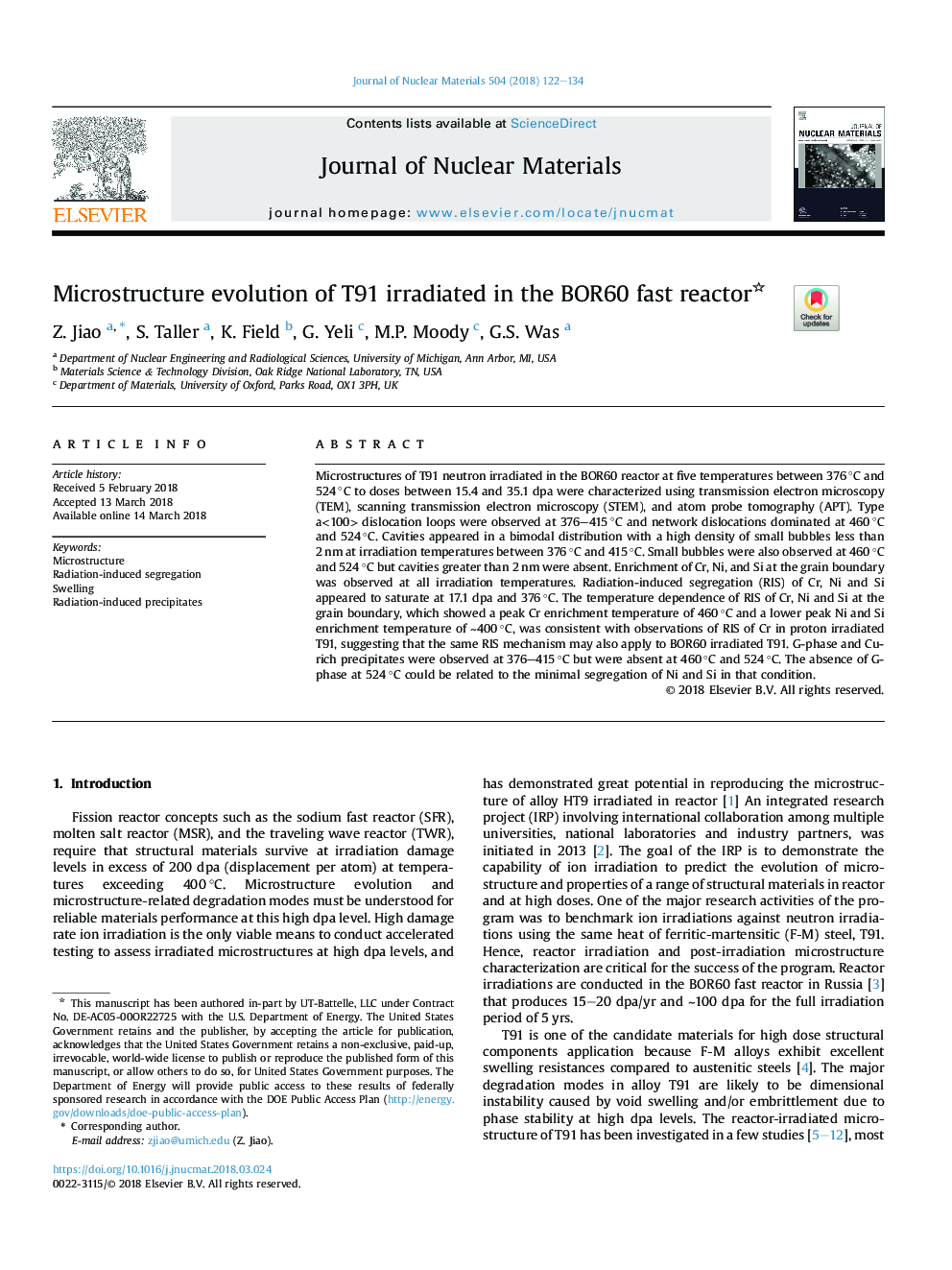| Article ID | Journal | Published Year | Pages | File Type |
|---|---|---|---|---|
| 7963276 | Journal of Nuclear Materials | 2018 | 13 Pages |
Abstract
Microstructures of T91 neutron irradiated in the BOR60 reactor at five temperatures between 376â¯Â°C and 524â¯Â°C to doses between 15.4 and 35.1 dpa were characterized using transmission electron microscopy (TEM), scanning transmission electron microscopy (STEM), and atom probe tomography (APT). Type a<100> dislocation loops were observed at 376-415â¯Â°C and network dislocations dominated at 460â¯Â°C and 524â¯Â°C. Cavities appeared in a bimodal distribution with a high density of small bubbles less than 2â¯nmâ¯at irradiation temperatures between 376â¯Â°C and 415â¯Â°C. Small bubbles were also observed at 460â¯Â°C and 524â¯Â°C but cavities greater than 2â¯nm were absent. Enrichment of Cr, Ni, and Si at the grain boundary was observed at all irradiation temperatures. Radiation-induced segregation (RIS) of Cr, Ni and Si appeared to saturate at 17.1 dpa and 376â¯Â°C. The temperature dependence of RIS of Cr, Ni and Si at the grain boundary, which showed a peak Cr enrichment temperature of 460â¯Â°C and a lower peak Ni and Si enrichment temperature of â¼400â¯Â°C, was consistent with observations of RIS of Cr in proton irradiated T91, suggesting that the same RIS mechanism may also apply to BOR60 irradiated T91. G-phase and Cu-rich precipitates were observed at 376-415â¯Â°C but were absent at 460â¯Â°C and 524â¯Â°C. The absence of G-phase at 524â¯Â°C could be related to the minimal segregation of Ni and Si in that condition.
Related Topics
Physical Sciences and Engineering
Energy
Nuclear Energy and Engineering
Authors
Z. Jiao, S. Taller, K. Field, G. Yeli, M.P. Moody, G.S. Was,
